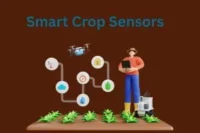Powerful Advantages of Aeroponics
Published: 8 Jun 2025
If you’ve always believed that plants must grow in soil, you’re not alone. It sounds strange, even impossible — no mud, no land, no backyard, yet the plants thrive? That’s exactly what aeroponics does. It flips traditional farming on its head and replaces soil with nothing but air and nutrient-rich mist. But how does it actually work? And more importantly, why are experts calling it the future of farming?
So, guys, without wasting time, let’s jump into the article to learn the Powerful Advantages of Aeroponics
What Is Aeroponics?
Aeroponics is a modern, soil-free farming technique where plant roots are suspended in air and regularly misted with a nutrient-rich water solution. Unlike traditional or hydroponic systems, aeroponics allows plants to absorb oxygen and nutrients more efficiently, leading to faster growth, cleaner produce, and minimal resource usage. The technique is gaining popularity for its sustainability, space-saving design, and ability to grow food in any environment — from urban rooftops to remote deserts
- Aeroponics = growing plants without soil, using air and nutrient mist.
- Roots hang in air and are sprayed with a nutrient-rich solution.
- Encourages faster growth and better oxygen absorption.
- Uses very little water and no land.
- Ideal for urban, indoor, or climate-challenged farming.
Benefits of Aeroponics
- Plants grow up to 3x faster than traditional soil methods.
- Direct mist feeding means no energy is wasted searching for nutrients.
- This speed means multiple harvests per year, helping you feed more, sell more, and save time.
Massive Water Savings – Every Drop Counts
- Aeroponics uses 95% less water than traditional farming.
- The closed-loop system recycles unused water, so nothing is wasted.
- Perfect for drought-prone areas and regions with water scarcity
No Soil = No Soil Diseases or Harmful Insects
- Say goodbye to problems like root rot, fungus, or pests from dirty soil.
- Your plants grow in a clean, sterile, protected environment.
- This means fewer chemicals, fewer losses, and more peace of mind.
Clean & Organic Food – Safer for Kids and Family
- With no chemicals and no pests, your food is truly organic and pure.
- Aeroponics reduces the need for harmful pesticides and herbicides.
Grow in Small Spaces – Perfect for Apartments & Cities
- Aeroponic systems can be set up vertically or in tight indoor spaces.
- Ideal for urban rooftops, balconies, or even kitchen gardens.
- Brings food independence to city dwellers who have no land.
Full Nutrient Control
- You decide exactly what your plants eat, how often, and in what quantity.
- No guesswork — just science, precision, and control.
- Allows you to optimize each plant’s health for maximum yield and taste.
Ideal for Harsh Environments
- NASA has tested aeroponics for growing food in space.
- Can be used in deserts, refugee camps, or war zones.
Higher Yields
- Faster growth + more plants per square foot = more harvests, more income.
- Lower cost of inputs (like water, land, and chemicals) = higher margins.
- Ideal for small business owners and young agripreneurs.
Protects the Future
- Uses less water, no soil, fewer chemicals, and very little space.
- Helps combat deforestation, soil erosion, and pollution.
FAQs about Powerful Advantages of Aeroponics
Here are some of the most frequently asked questions about the advantages and disadvantages of the Internet.
It may sound strange, but plants don’t actually need soil — they need water, nutrients, and air. In aeroponics, the roots get all of this directly through a fine mist, which helps them grow even faster than in soil.
Yes, both are soil-free, but aeroponics uses mist to feed plant roots suspended in air, while hydroponics submerges roots in water. Aeroponics allows for better oxygen intake and faster growth.
That’s a common fear, but no — the roots are regularly misted with water and nutrients. The system is carefully timed so plants stay hydrated and healthy at all times.
Not at all! Aeroponic systems come in all sizes — even small home kits you can set up in your kitchen, balcony, or a spare corner.
It uses some electricity for the misting system, but saves tons of water and space. In the long run, it’s often more cost-effective than traditional farming.

- Be Respectful
- Stay Relevant
- Stay Positive
- True Feedback
- Encourage Discussion
- Avoid Spamming
- No Fake News
- Don't Copy-Paste
- No Personal Attacks

- Be Respectful
- Stay Relevant
- Stay Positive
- True Feedback
- Encourage Discussion
- Avoid Spamming
- No Fake News
- Don't Copy-Paste
- No Personal Attacks





